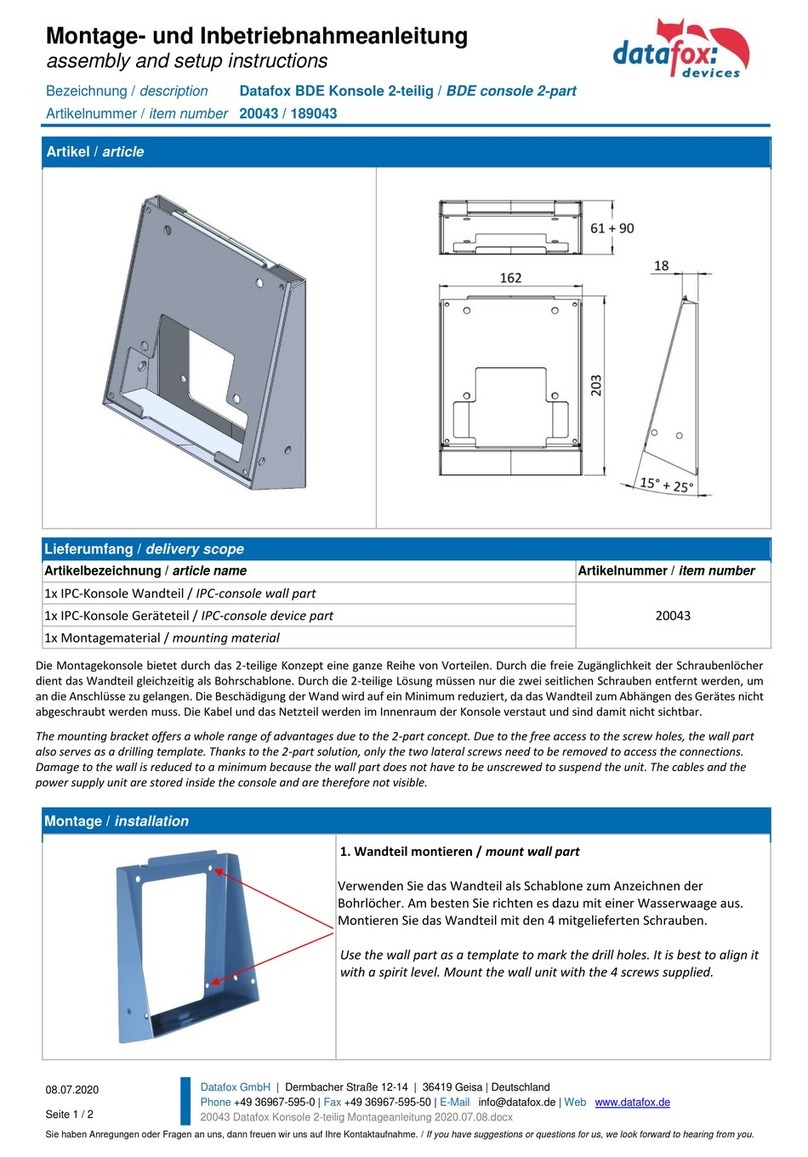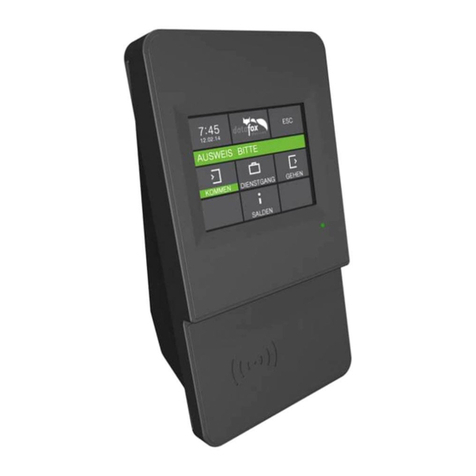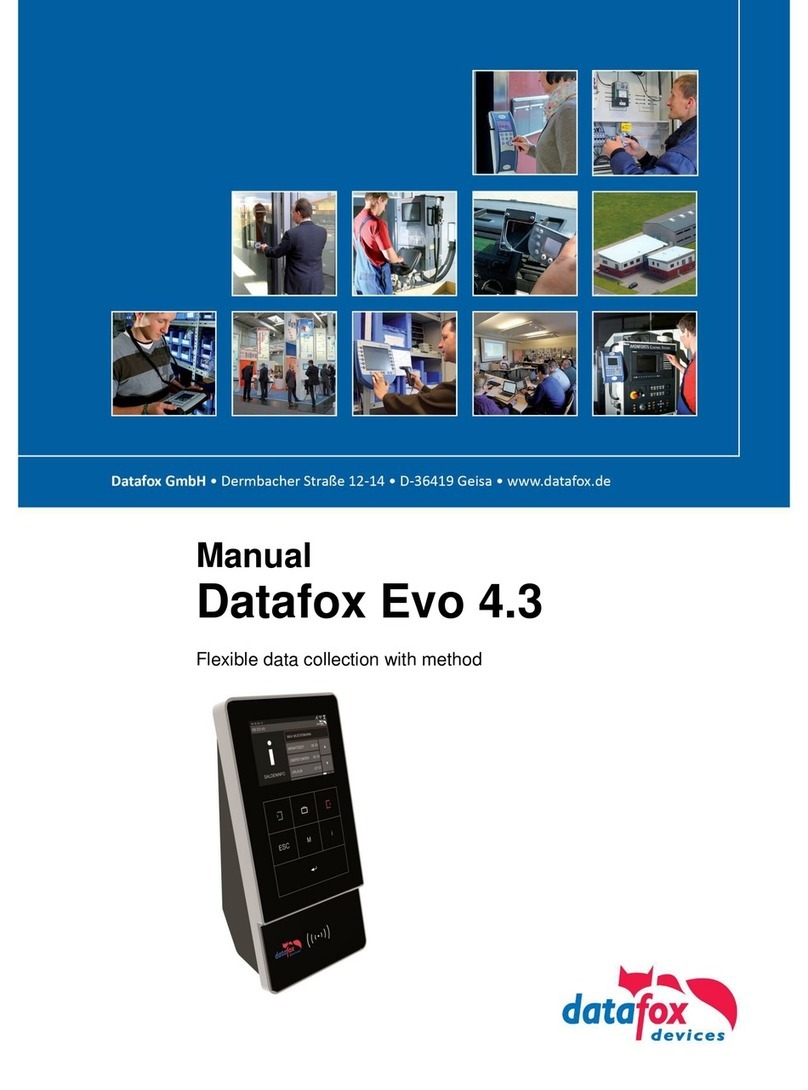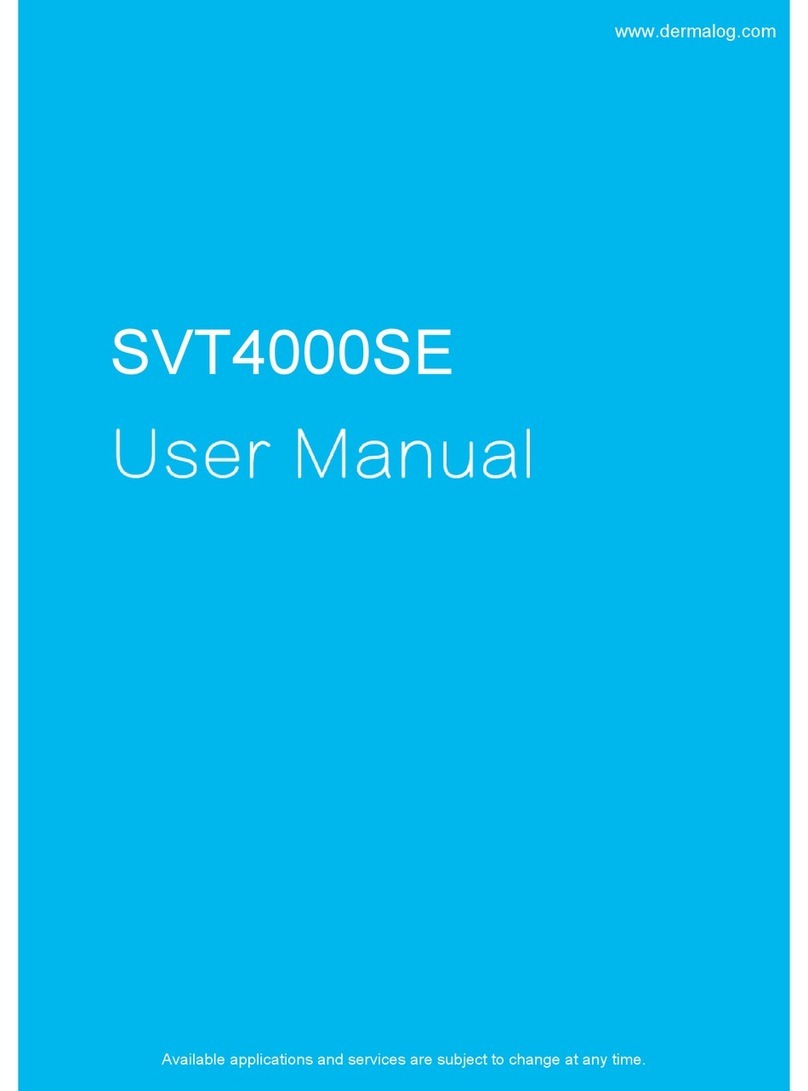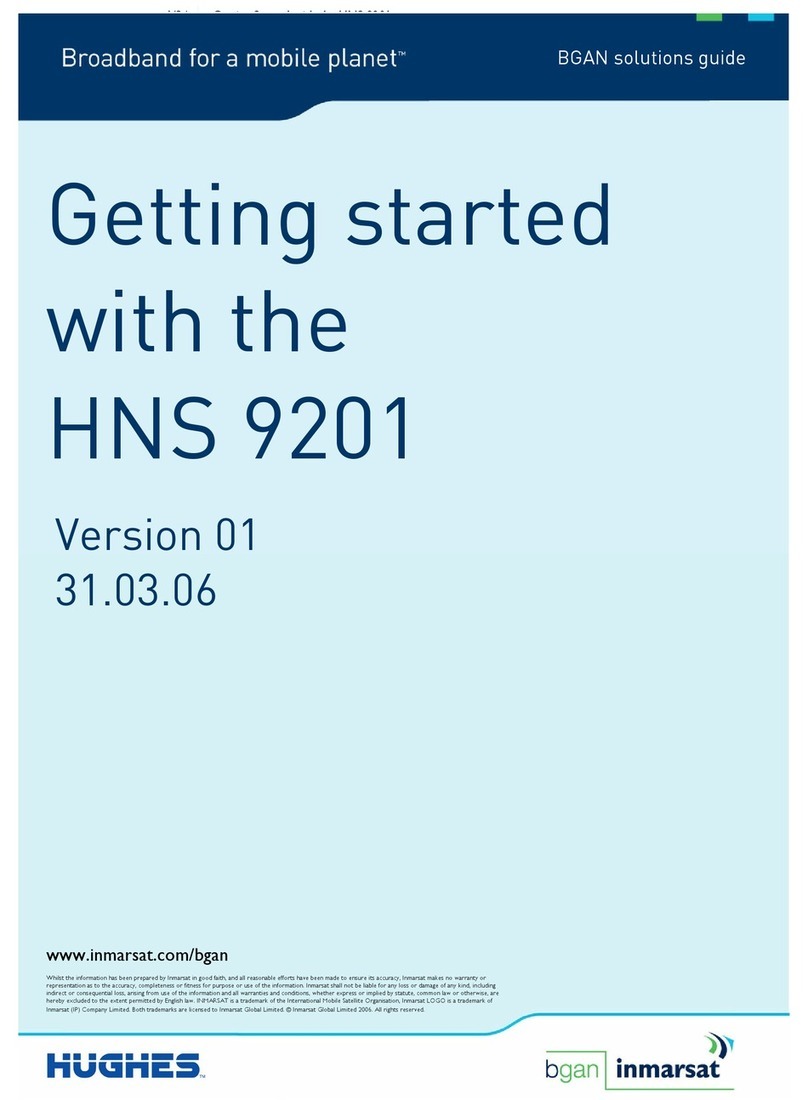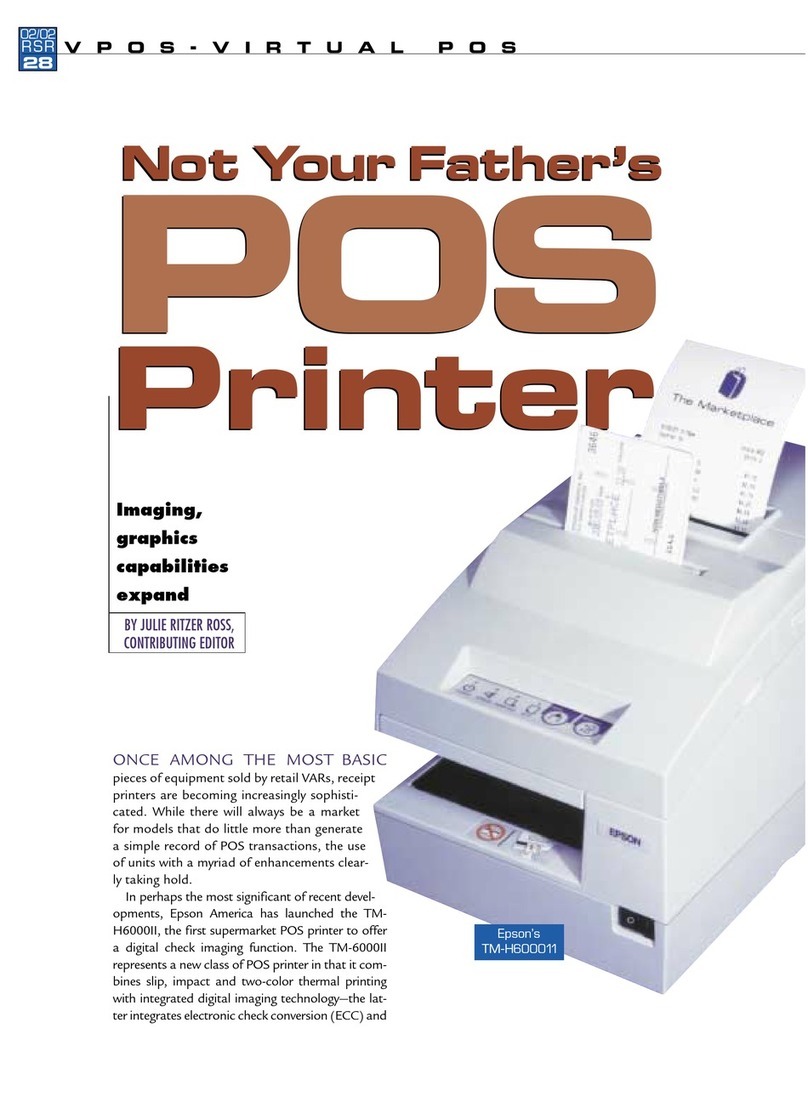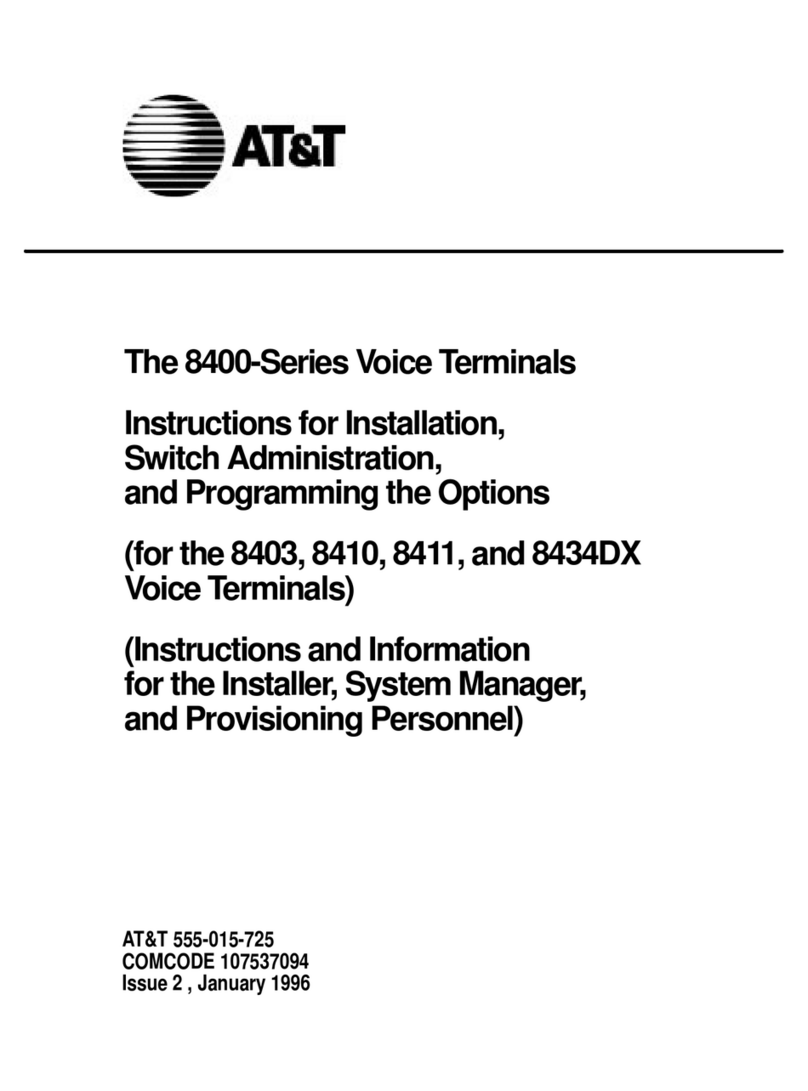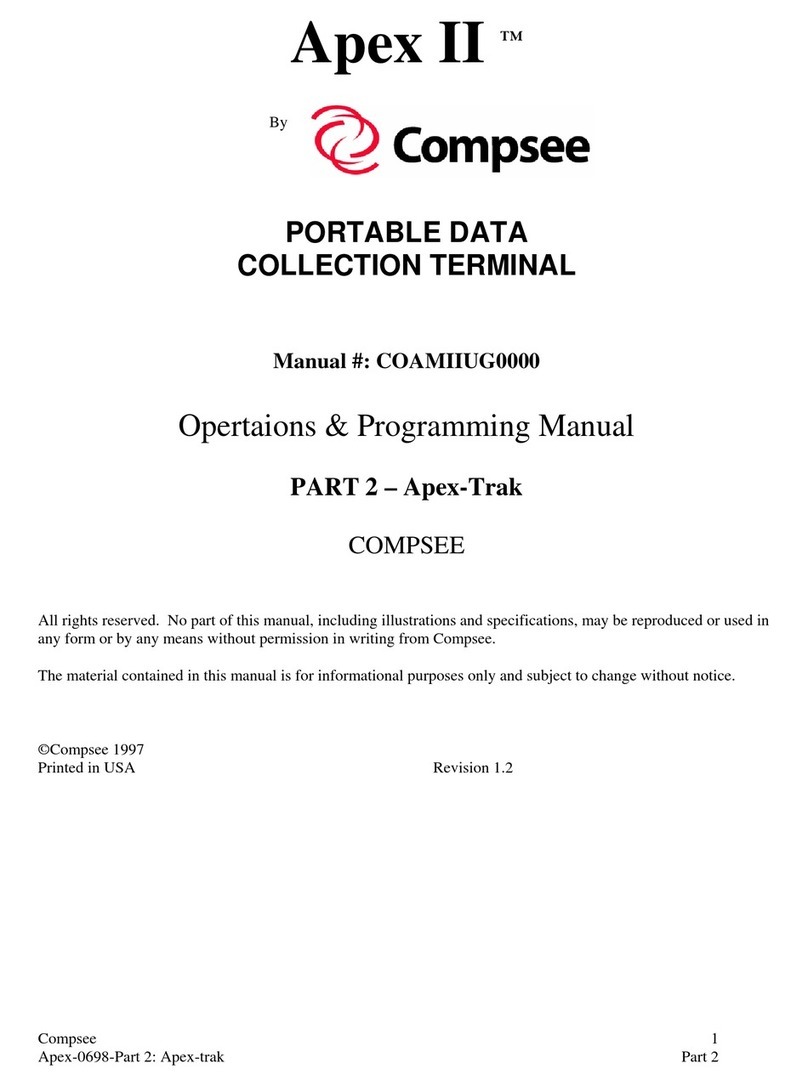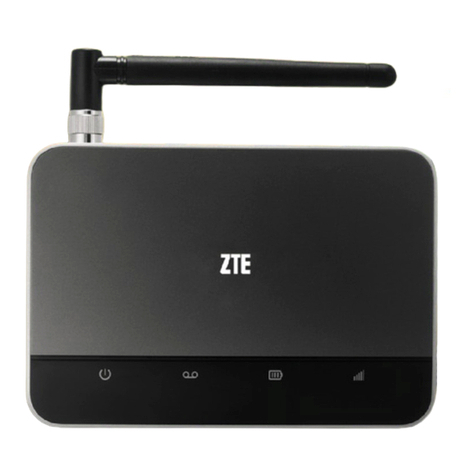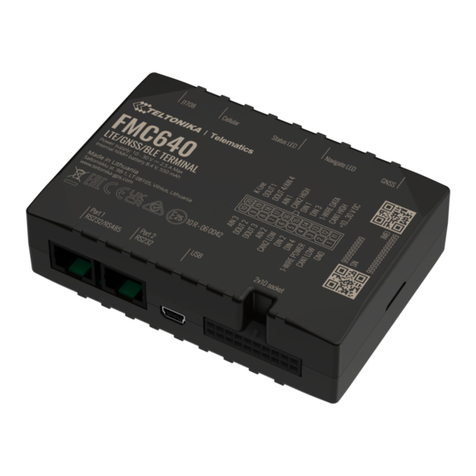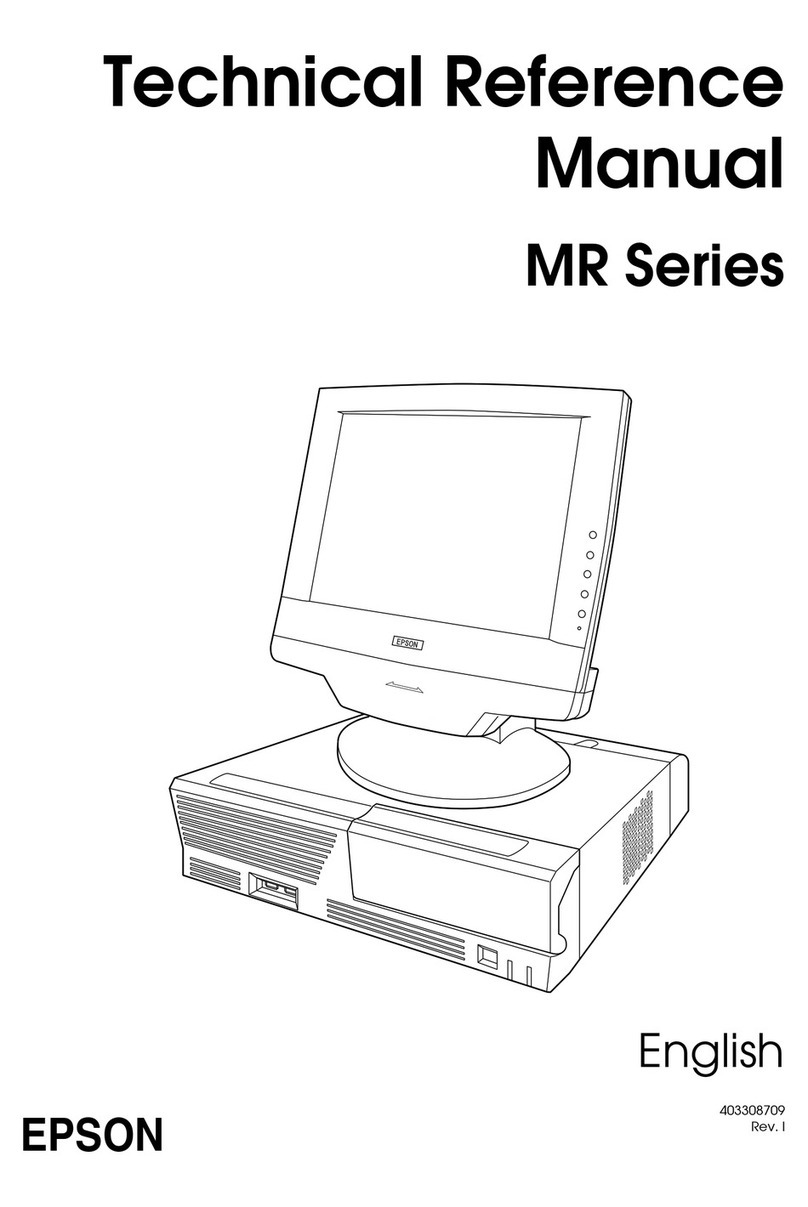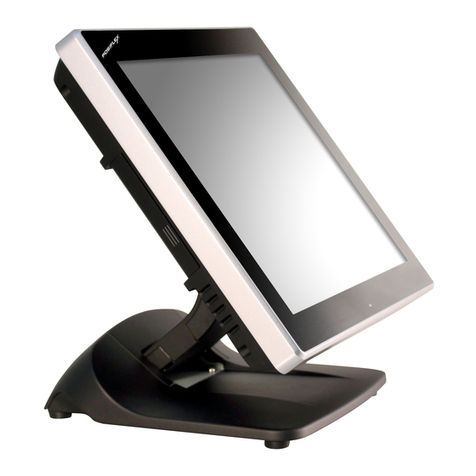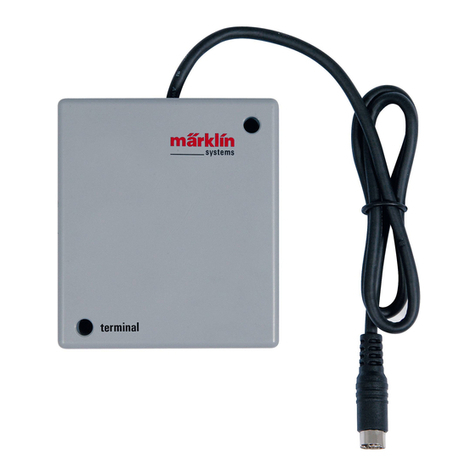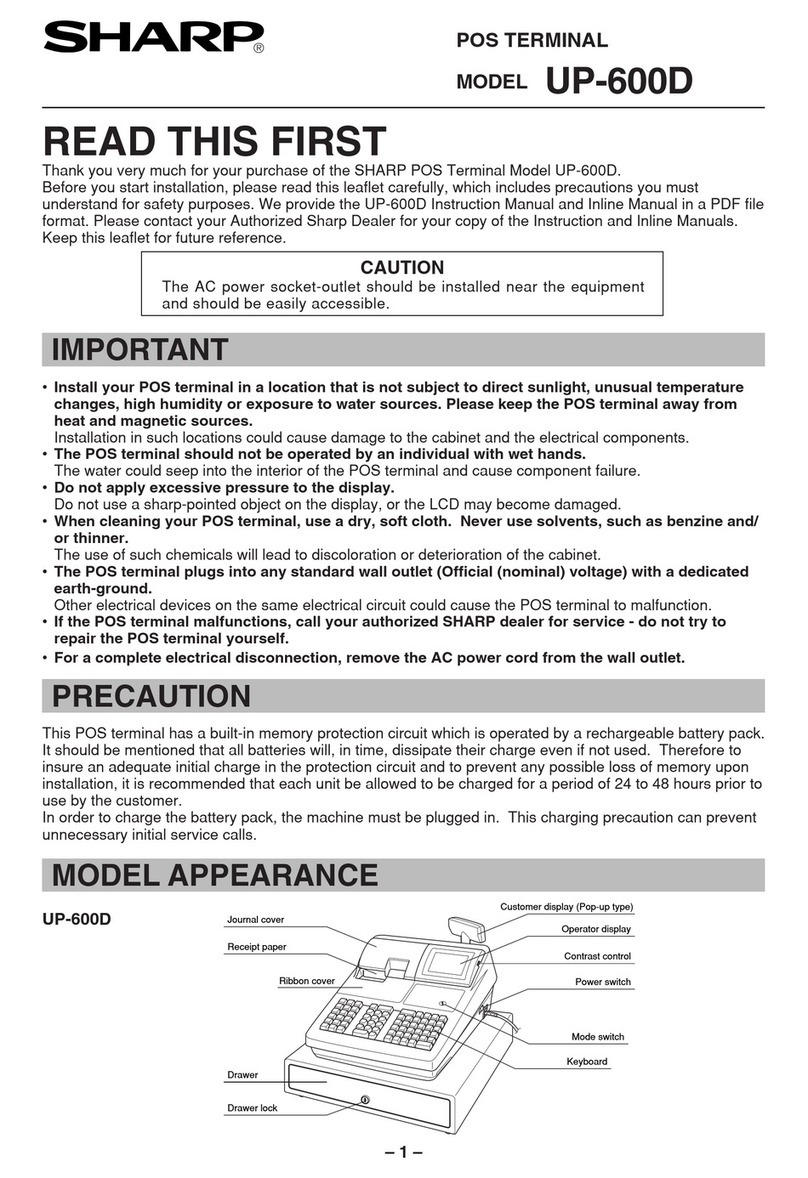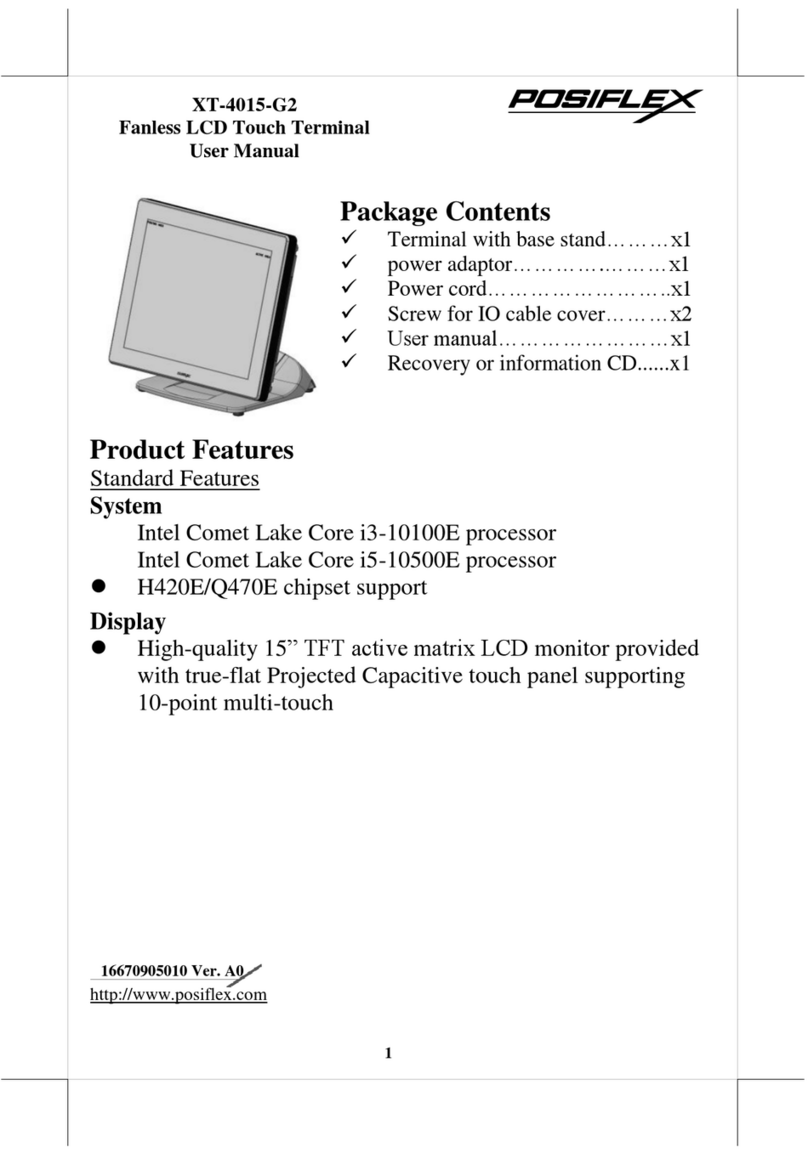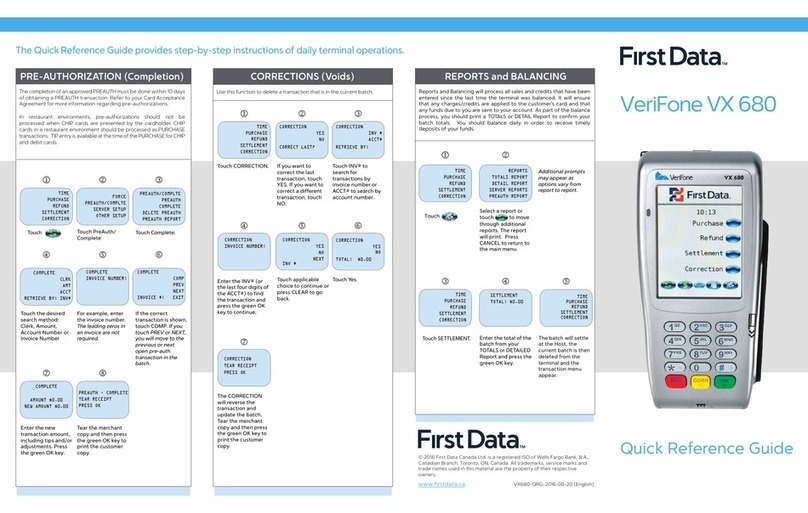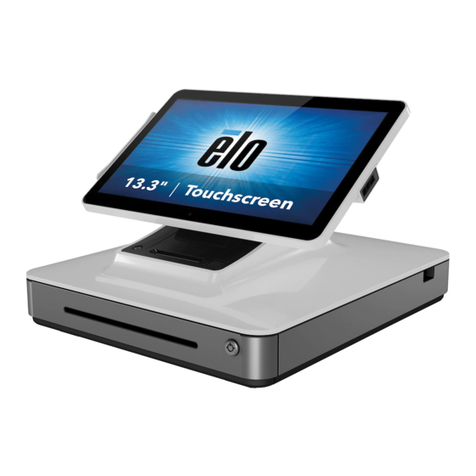Datafox ZK-MasterIV User manual

Manual Datafox ZK-MasterIV
Datafox ZK-MasterIV
Access only for authorized persons
Version: 04.01.07.00 Page 1www.datafox.de

Manual Datafox ZK-MasterIV
Contents
1 Introduction 7
1.1 Updates in this document .................................... 7
1.2 Alterations of the version .................................... 7
1.3 The device file archive (*.dfz) .................................. 7
1.3.1 Description ........................................ 7
1.3.2 Function of the archive .................................. 7
1.3.3 Manual selection of a file ................................. 7
1.4 Typography of the manual .................................... 8
1.5 Important general advice ..................................... 9
2 System structure and functional principle 11
2.1 Software versions and compatibility of device firmware and setup . . . . . . . . . . . . . . 11
2.2 Firmware ............................................. 13
2.2.1 Firmware update ..................................... 13
2.2.2 Firmware downgrade . . . . . . . . . . . . . . . . . . . . . . . . . . . . . . . . . . . 13
2.3 System structure ......................................... 14
2.3.1 Device functions ..................................... 14
2.3.2 Communication . . . . . . . . . . . . . . . . . . . . . . . . . . . . . . . . . . . . . . 14
3 ZK-MasterIV 18
3.1 Technical data . . . . . . . . . . . . . . . . . . . . . . . . . . . . . . . . . . . . . . . . . . 18
3.2 Connection ............................................ 19
3.2.1 Power supply ....................................... 22
3.2.2 Digital Input ....................................... 22
3.2.3 USB connector . . . . . . . . . . . . . . . . . . . . . . . . . . . . . . . . . . . . . . 23
3.2.4 Ethernet interface .................................... 23
3.2.5 Mobile communications modem ............................. 23
3.3 Commissioning . . . . . . . . . . . . . . . . . . . . . . . . . . . . . . . . . . . . . . . . . . 24
3.4 Operation ............................................. 24
3.5 Communications ......................................... 24
3.5.1 Communication via RS232 ................................ 24
3.5.1.1 Requirement . . . . . . . . . . . . . . . . . . . . . . . . . . . . . . . . . . 24
3.5.1.2 Connection . . . . . . . . . . . . . . . . . . . . . . . . . . . . . . . . . . . 24
3.5.1.3 Conversion of RS232 to RS485 . . . . . . . . . . . . . . . . . . . . . . . . 25
3.5.2 Communication via USB ................................. 27
3.5.2.1 Conditions . . . . . . . . . . . . . . . . . . . . . . . . . . . . . . . . . . . 27
3.5.2.2 Connection . . . . . . . . . . . . . . . . . . . . . . . . . . . . . . . . . . . 27
3.5.2.3 Driver installation . . . . . . . . . . . . . . . . . . . . . . . . . . . . . . . 27
3.5.2.4 USB stick as data medium . . . . . . . . . . . . . . . . . . . . . . . . . . 30
3.5.2.4.1 Data structure and security . . . . . . . . . . . . . . . . . . . . . 30
3.5.2.4.2 Change the password of the communication . . . . . . . . . . . . 33
3.5.3 Communication via analogous modem ......................... 34
3.5.3.1 Conditions . . . . . . . . . . . . . . . . . . . . . . . . . . . . . . . . . . . 34
3.5.3.2 Connection . . . . . . . . . . . . . . . . . . . . . . . . . . . . . . . . . . . 34
3.5.3.3 Modem initialization . . . . . . . . . . . . . . . . . . . . . . . . . . . . . . 37
3.5.3.4 Connection via the DatafoxStudioIV . . . . . . . . . . . . . . . . . . . . . 37
3.5.3.5 Connection via the DFComDLL . . . . . . . . . . . . . . . . . . . . . . . 38
3.5.4 Communication via GSM or GPRS/GSM . . . . . . . . . . . . . . . . . . . . . . . 39
3.5.4.1 Preparation . . . . . . . . . . . . . . . . . . . . . . . . . . . . . . . . . . . 39
Version: 04.01.07.00 Page 2www.datafox.de

Manual Datafox ZK-MasterIV
3.5.4.2 Configuration . . . . . . . . . . . . . . . . . . . . . . . . . . . . . . . . . . 39
3.5.4.3 Connection state ................................ 40
3.5.4.4 Send data via GPRS . . . . . . . . . . . . . . . . . . . . . . . . . . . . . . 41
3.5.5 Communication via TCP/IP . . . . . . . . . . . . . . . . . . . . . . . . . . . . . . 43
3.5.5.1 LAN ....................................... 44
3.5.5.2 Transition from TCP/IP to RS232 . . . . . . . . . . . . . . . . . . . . . . 45
3.5.5.3 Transition from TCP/IP to RS485 Bus . . . . . . . . . . . . . . . . . . . 46
3.5.5.4 WLAN ..................................... 47
3.5.6 Communication via RS485 ................................ 47
3.5.7 Active connection via TCP/IP ............................. 48
3.5.7.1 Description . . . . . . . . . . . . . . . . . . . . . . . . . . . . . . . . . . . 48
3.5.7.2 Configuration of an active connection . . . . . . . . . . . . . . . . . . . . 49
3.5.7.3 Device servicing via active connection . . . . . . . . . . . . . . . . . . . . 51
3.5.8 WLAN . . . . . . . . . . . . . . . . . . . . . . . . . . . . . . . . . . . . . . . . . . 53
3.5.8.1 General information . . . . . . . . . . . . . . . . . . . . . . . . . . . . . . 53
3.5.8.2 Terms and explanations . . . . . . . . . . . . . . . . . . . . . . . . . . . . 53
3.5.8.2.1 Infrastructure Mode ......................... 53
3.5.8.2.2 Ad-hoc Mode ............................. 53
3.5.8.2.3 Frequencies and ports . . . . . . . . . . . . . . . . . . . . . . . . 54
3.5.8.2.4 Security and encryption . . . . . . . . . . . . . . . . . . . . . . . 54
3.5.8.2.5 Authentification . . . . . . . . . . . . . . . . . . . . . . . . . . . 54
3.5.8.2.6 Passwords . . . . . . . . . . . . . . . . . . . . . . . . . . . . . . . 55
3.5.8.3 BIOS dialogue DatafoxStudioIV . . . . . . . . . . . . . . . . . . . . . . . 55
3.5.8.4 Dependencies . . . . . . . . . . . . . . . . . . . . . . . . . . . . . . . . . . 56
3.5.8.5 WLAN configuration via the Lantronix tool . . . . . . . . . . . . . . . . . 56
3.5.8.6 WLAN configuration via the DatafoxStudioIV . . . . . . . . . . . . . . . 57
3.5.8.6.1 General ................................ 57
3.5.8.6.2 Selection of the serial interface . . . . . . . . . . . . . . . . . . . 57
3.5.8.6.3 Selection of the configuration file . . . . . . . . . . . . . . . . . . 58
3.5.8.6.4 TCP/IP settings . . . . . . . . . . . . . . . . . . . . . . . . . . . 59
3.5.8.6.5 WLAN settings . . . . . . . . . . . . . . . . . . . . . . . . . . . . 59
3.6 Access control II with TS TMR33 modules . . . . . . . . . . . . . . . . . . . . . . . . . . . 61
3.6.1 Set-up ........................................... 61
3.6.1.1 A door without a separate reader . . . . . . . . . . . . . . . . . . . . . . . 62
3.6.1.2 A door with a separate reader . . . . . . . . . . . . . . . . . . . . . . . . 62
3.6.1.3 Several external doors via RS485 bus . . . . . . . . . . . . . . . . . . . . 63
3.6.1.4 Several internal doors via RS485 bus . . . . . . . . . . . . . . . . . . . . . 64
3.6.1.5 Mantrap function with RS485 bus . . . . . . . . . . . . . . . . . . . . . . 65
3.6.2 Connection ........................................ 66
3.6.2.1 Wiring ..................................... 67
3.6.2.2 Calculation instructions . . . . . . . . . . . . . . . . . . . . . . . . . . . . 73
3.6.2.3 Topologie .................................... 74
3.6.2.4 Examples .................................... 74
3.6.2.4.1 Bus topology ............................. 74
3.6.2.4.2 Star topology ............................. 75
3.6.3 Configuration ....................................... 76
3.6.4 An example for a ZK system . . . . . . . . . . . . . . . . . . . . . . . . . . . . . . 80
3.7 Timing of the digital exits for the MasterIV device series . . . . . . . . . . . . . . . . . . . 86
3.8 Access control II with PHG modules . . . . . . . . . . . . . . . . . . . . . . . . . . . . . . 88
3.8.1 Connection ........................................ 89
Version: 04.01.07.00 Page 3www.datafox.de

Manual Datafox ZK-MasterIV
3.8.2 Configuration ....................................... 90
3.9 Status message of the access control . . . . . . . . . . . . . . . . . . . . . . . . . . . . . . 91
4 DatafoxStudioIV - General operation 93
4.1 Installation ............................................ 93
4.2 Operation of the DatafoxStudioIV . . . . . . . . . . . . . . . . . . . . . . . . . . . . . . . 93
4.3 Menu Datei ............................................ 94
4.3.1 Creating a new setup file ................................. 94
4.3.2 Open setup file . . . . . . . . . . . . . . . . . . . . . . . . . . . . . . . . . . . . . . 95
4.4 Menu Setup ............................................ 96
4.4.1 Edit ............................................ 96
4.4.2 Import access control lists ................................ 96
4.4.3 Configure data storage . . . . . . . . . . . . . . . . . . . . . . . . . . . . . . . . . . 97
4.4.4 Load firmware . . . . . . . . . . . . . . . . . . . . . . . . . . . . . . . . . . . . . . 98
4.4.5 Device maintenance via modem connection . . . . . . . . . . . . . . . . . . . . . . 99
4.4.5.1 Functions for device maintenance . . . . . . . . . . . . . . . . . . . . . . . 100
4.4.6 Edit text data of the firmware . . . . . . . . . . . . . . . . . . . . . . . . . . . . . . 102
4.5 Menu Communication . . . . . . . . . . . . . . . . . . . . . . . . . . . . . . . . . . . . . . 105
4.5.1 Write / read setup .................................... 105
4.5.2 Load lists/ access control lists . . . . . . . . . . . . . . . . . . . . . . . . . . . . . . 105
4.5.3 Import and load Timeboy lists . . . . . . . . . . . . . . . . . . . . . . . . . . . . . 106
4.5.4 Read, delete, display data ................................ 107
4.5.4.1 Read data and delete them . . . . . . . . . . . . . . . . . . . . . . . . . . 107
4.5.5 Set time . . . . . . . . . . . . . . . . . . . . . . . . . . . . . . . . . . . . . . . . . . 107
4.5.6 Read serial number .................................... 107
4.5.7 Read global variables . . . . . . . . . . . . . . . . . . . . . . . . . . . . . . . . . . . 108
4.5.8 System variables of the signal processing . . . . . . . . . . . . . . . . . . . . . . . . 109
4.5.9 Display state of the ZK-modules . . . . . . . . . . . . . . . . . . . . . . . . . . . . 110
4.5.10 Work through batches . . . . . . . . . . . . . . . . . . . . . . . . . . . . . . . . . . 111
4.5.11 GPRS configuration . . . . . . . . . . . . . . . . . . . . . . . . . . . . . . . . . . . 112
4.5.12 Device configuration BIOS ................................ 114
4.5.13 Settings . . . . . . . . . . . . . . . . . . . . . . . . . . . . . . . . . . . . . . . . . . 117
4.6 Menu Extra ............................................ 119
5 DatafoxStudioIV - Setup 120
5.1 Basics . . . . . . . . . . . . . . . . . . . . . . . . . . . . . . . . . . . . . . . . . . . . . . . 120
5.1.1 Planning . . . . . . . . . . . . . . . . . . . . . . . . . . . . . . . . . . . . . . . . . . 120
5.2 Functions of a setup . . . . . . . . . . . . . . . . . . . . . . . . . . . . . . . . . . . . . . . 122
5.2.1 Basic settings . . . . . . . . . . . . . . . . . . . . . . . . . . . . . . . . . . . . . . . 122
5.2.2 Global variables . . . . . . . . . . . . . . . . . . . . . . . . . . . . . . . . . . . . . . 122
5.2.3 Transponder . . . . . . . . . . . . . . . . . . . . . . . . . . . . . . . . . . . . . . . 123
5.2.3.1 Transponder reading systems . . . . . . . . . . . . . . . . . . . . . . . . . 125
5.2.3.2 Function upgrading for Mifare transponders . . . . . . . . . . . . . . . . . 131
5.2.3.2.1 General information . . . . . . . . . . . . . . . . . . . . . . . . . 131
5.2.3.2.2 Global settings . . . . . . . . . . . . . . . . . . . . . . . . . . . . 131
5.2.3.2.3 Function normal . . . . . . . . . . . . . . . . . . . . . . . . . . . 134
5.2.3.2.4 Transponder value write, also for Hitag1, Hitag2 and Titan . . . 134
5.2.3.2.5 Transponder menu . . . . . . . . . . . . . . . . . . . . . . . . . . 134
5.2.3.3 Application possibilities for Hitag-transponder . . . . . . . . . . . . . . . 135
5.2.4 Creating data record descriptions . . . . . . . . . . . . . . . . . . . . . . . . . . . . 137
5.2.5 Creating list descriptions ................................ 138
Version: 04.01.07.00 Page 4www.datafox.de

Manual Datafox ZK-MasterIV
5.2.6 Creating a user guidance . . . . . . . . . . . . . . . . . . . . . . . . . . . . . . . . . 139
5.2.6.1 Defining input chains . . . . . . . . . . . . . . . . . . . . . . . . . . . . . 139
5.2.6.2 Defining input fields . . . . . . . . . . . . . . . . . . . . . . . . . . . . . . 140
5.2.6.2.1 Field functions in general . . . . . . . . . . . . . . . . . . . . . . 141
5.2.6.2.2 Field functions of the access control . . . . . . . . . . . . . . . . 142
5.2.6.3 Expanded .................................... 142
5.2.6.4 Reaction on list selection . . . . . . . . . . . . . . . . . . . . . . . . . . . 143
5.2.6.5 Jumps . . . . . . . . . . . . . . . . . . . . . . . . . . . . . . . . . . . . . . 143
5.2.7 Signal processing ..................................... 143
5.2.7.1 Use as Start/Stop . . . . . . . . . . . . . . . . . . . . . . . . . . . . . . . 143
5.2.7.2 Use as counter . . . . . . . . . . . . . . . . . . . . . . . . . . . . . . . . . 144
5.2.7.3 Use as counter with Start/Stop . . . . . . . . . . . . . . . . . . . . . . . . 145
5.2.7.4 Use as counter with Start/Stop via timeout . . . . . . . . . . . . . . . . . 145
5.2.7.5 Use as counter with Start/Stop via timeout and 1st counting impulse . . 146
5.2.7.6 Connection Timeboy . . . . . . . . . . . . . . . . . . . . . . . . . . . . . . 147
5.2.7.7 Alive data record ................................ 147
5.2.7.8 Setting of timers ................................ 147
5.2.7.9 Setting of timers ................................ 147
5.2.8 Mathematical operations . . . . . . . . . . . . . . . . . . . . . . . . . . . . . . . . . 147
5.3 Creating setups . . . . . . . . . . . . . . . . . . . . . . . . . . . . . . . . . . . . . . . . . . 149
5.3.1 Setup for access control version II . . . . . . . . . . . . . . . . . . . . . . . . . . . . 149
5.3.1.1 General ..................................... 149
5.3.1.2 Hardware components of access control system . . . . . . . . . . . . . . . 149
5.3.1.3 Basic settings . . . . . . . . . . . . . . . . . . . . . . . . . . . . . . . . . . 150
5.3.1.4 Creating a data record description . . . . . . . . . . . . . . . . . . . . . . 151
5.3.1.5 Creating the access control lists . . . . . . . . . . . . . . . . . . . . . . . 152
5.3.1.6 Creating an input chain of access control . . . . . . . . . . . . . . . . . . 154
5.3.1.7 Transmission of the complete configuration to the terminal . . . . . . . . 157
Version: 04.01.07.00 Page 5www.datafox.de

Manual Datafox ZK-MasterIV
c
2008 by Datafox GmbH
This document has been created by Datafox GmbH and is copyrighted against third parties. Datafox
GmbH considers all contained information, knowledge and depictions as its sole property. All rights,
including also translation, reprint or copy of the whole document or parts of it, require written consent of
Datafox GmbH. The assertion of all rights in this respect is reserved to Datafox GmbH, especially in case
of the grant of a patent. The handover of this documentation does not establish a claim to the licence
or the use the soft- and hardware. Copies of the diskettes and CDs may only be made for the purpose of
data backup. Every unauthorized copy of this documentation or the Datafox-software will be prosecuted.
Version: 04.01.07.00 Page 6www.datafox.de

Manual Datafox ZK-MasterIV
1 Introduction
1.1 Updates in this document
1.2 Alterations of the version
With the device generation IV a new versioning scheme has been introduced. According to this scheme
the file name of the device firmware and the setup program (DatafoxStudioIV) is composed as follows:
product name XX. YY. ZZ. Build
device-
generation
compatibility
(which versions
can be used
together)
version number
(functional ex-
tension)
Build trou-
bleshooting
(with a new ver-
sion the Build
number is reset)
e. g. ZK-MasterIV 04. 01. 01. 12
The use of the manual depends on the version of the firmware and the DatafoxStudioIV or the DFComDLL.
Gather from the following table which manual matches which version. For different combinations no sup-
port can be offered.
version
date manual firmware Studio/DLL description
21. Dez. 2006 4.01.03 4.01.03 4.01.03 new release
06. Juni 2007 4.01.04.16 4.01.04.16 4.01.04.16 new release
1.3 The device file archive (*.dfz)
1.3.1 Description
Device files (*.hex) of the MasterIV - devices are delivered in a common device file archive. It has the file
extension dfz (stands for Datafox Zip). Now simply the device file archives are indicated instead of the
device files (*.hex). This applies to the DatafoxStudioIV and DLL. The indication of device files (*.hex)
is still possible.
1.3.2 Function of the archive
The transmission routine of the device file picks out the fitting file from the device file archive on the
basis of the hardware options available in the device. Thus, it is guaranteed that all hardware components
available in the device are supported by the corresponding firmware.
1.3.3 Manual selection of a file
If you do not want to integrate the archive in your installation, you have the possibility to add single
device files from the archive to the installation.
The file format of the device file archive is Zip. Hence, you can open the archive with every standard Zip-
program. Via the menu item "open with..." in the context menu you can chose an appropriate program
Version: 04.01.07.00 Page 7www.datafox.de

Manual Datafox ZK-MasterIV
for opening the file. If necessary you can call up a program combined with this file format to open the
file by renaming the file from dfz to zip.
In the archive you find a file called Inhalt.pdf; you can gather from there which file (*.hex) of the archive
matches your device. Extract the device file (*.hex) you want and rename it if necessary. A renaming of
a file is always possible, because all information are in the file itself.
You can state the device file extracted before as device file in DatafoxStudioIV and at calling the DLL
function. It is still tested if the file can be loaded into the chosen device before the transmission takes
place.
1.4 Typography of the manual
exposition contextual meaning
ZK-MasterIV , Sof twareV ersion.pdf
file names
Setup
edit
a path via a program menu at DatafoxStudioIV
communication a single menu item
FW abbreviation for firmware (software in the device)
(from FW V 3.1.5) shows that this function is supported from the
firmware version 3.1.5 onwards
SW abbreviation for software
HW abbreviation for hardware
(from HW V 2.0) shows that this option is available from the
hardware version 2.0 onwards
GV abbreviation for global variable
ZK-list abbreviation for access control lists, where the
configuration data for the access control is
provided
cross-reference 1.4 In the electronic document you can use the
cross-references to jump within the manual.
Therefore, cross-references are depicted in blue
and crossing them the cursor takes the shape of a
hand .
Note:
You will get useful advice which helps you to avoid possible mistakes during the
installation, configuration and commissioning.
Version: 04.01.07.00 Page 8www.datafox.de

Manual Datafox ZK-MasterIV
Caution:
There will be advice given you definitely have to keep to. Otherwise it will lead to
defective function of the system.
1.5 Important general advice
Caution:
Use the devices only according to regulations and following the assembly, com-
missioning and operating instructions. Assembly and commissioning may only be
carried out by authorized and qualified personnel.
Subject to technical alterations.
Caution:
Because of technical development illustrations, functional steps, technical processes
and data can differ slightly.
Datafox ZK-MasterIV has been developed to create a flexible terminal for time and attendance, order
time collection and access control that can easily be integrated. The device is robust and easy to use.
You save time through the PC - setup program, because the device is quickly and easily configured for
its application field.
This manual describes the creation of work flows for time and attendance with the setup
program.
Before deciding for the programming in C you should check if the functions of the setup program do fulfil
the system requirements after all , because then the development effort will be reduced to a minimum.
With some exercise it will be possible to compile a complete entry within half an hour. If you need
functions that are not available we should get into contact.
If you need support at the compilation of setups we offer you our services. Because of our wide experience
in dealing with the setup we are very quick and can make your setup even more efficient through useful
advice, so that the entry at the device can take place quickly and reliably.
Through our experience and with our specialized knowledge of method, hard- and software we produce
devices and find solutions concerning data collection, that prove themselves with functionality and prac-
ticality. We offer solutions for REFA/ job analysis, time and attendance, production data collection,
machine data collection, process data collection and mobile data collection. Out team develops and pro-
duces standardized and inexpensive systems. We create solutions using the modular principle and expand
them as required. Our service includes consultation, system definition and implementation as well as
workshops and training to support you in the introduction.
Guarantee restriction
Version: 04.01.07.00 Page 9www.datafox.de

Manual Datafox ZK-MasterIV
All data in this manual has been checked carefully. Nevertheless, errors cannot be excluded. Therefore,
there cannot be given guarantee nor taken legal responsibility for consequences that derive from errors
of this manual. Of course we are grateful if you point out errors to us. Subject to change because of
technical improvements. Our general terms and conditions of business apply.
Note:
Because of the DatafoxStudioIV the Datafox devices have many functions and com-
bination of functions; therefore, it is not possible to test all functions and their com-
binations in case of updates. This applies especially to all the setups you created as
a customer. Before updating your device please test if your individual setup works
without errors. If you detect an error contact us immediately. We will rectify the
mistake at short notice.
Version: 04.01.07.00 Page 10 www.datafox.de

Manual Datafox ZK-MasterIV
2 System structure and functional principle
2.1 Software versions and compatibility of device firmware and setup
The firmware (operating system) of the device and the setup program (*.aes data file = application pro-
gram) form a unit. With the setup program the configuration for the device (definition of the data tables
and the data fields, operation, etc.) is compiled and transmitted to the device. Then the firmware works
in accordance with the setup adjustments.
Firmware in device
After switching-on the current firmware version
is shown on the display. The firmware can be
transmitted to the device with DatafoxStudioIV.
At delivery a demo setup is at the device. The
description of the demo setup you will find in
chapter 5.3.1. It is advisable to go through the
example at first comparing the process with the
setup. That way a quick introduction to the
configuration is possible.
Setup program on PC
After starting the setup program the user interface
is displayed.
You can get information about the current soft-
ware version via the info dialog of DatafoxStudioIV.
Click on the
?
in the menu bar and then on
inf o over Dataf oxStudioIV
..
Version: 04.01.07.00 Page 11 www.datafox.de

Manual Datafox ZK-MasterIV
Compatibility of firmware and DatafoxStudioIV
The DatafoxStudioIV is downward compatible within the firmware versions 4.x.xx. The second number
shows the compatibility group. If this number is changed, a more up-to-date firmware generation must
be used.
Note:
Devices with an older firmware can also be configured with DatafoxStudioIV, but
only that functions are provided by the device which are also provided by the older
firmware. However, it is impossible to configure a more up-to-date firmware version
with an older DatafoxStudioIV-Version.
That means, the manual version that corresponds to the firmware with the appropriate setup is always
relevant for the possible functions. The manual version and the appropriate DatafoxStudioIV always have
the same index. It is impossible to configure a firmware with a DatafoxStudioIV version that is older than
the firmware. Recommendation: If possible use the appropriate DatafoxStudioIV version. This version
always has to be
the version of the firmware.
The data file:
ZK
M asterIV, Sof twareV ersionen Stand xxx.pdf
shows which functions are provided
by which software release. You will find the file on the CD. Please alsocomply with the
instructions given in the chapters of the manual.
The updates are available for download on our internet page www.datafox.de.
Caution:
When the new device is delivered always the firmware version recently released is
used. If you wish to work with an older version please carry out a downgrade.
Please comply with the instructions in chapter 2.2.2.
Version: 04.01.07.00 Page 12 www.datafox.de

Manual Datafox ZK-MasterIV
2.2 Firmware
Caution:
A firmware update or downgrade is a very sensitive process. Possibly a reset of
the main communication to RS232 may occur. In any case comply with the details
about the compatibility in the software version list.
2.2.1 Firmware update
Caution:
Before starting a firmware update please check on the basis of the software version
list whether there are any version dependencies that must be kept.
For example, when changing from version 04.00.xx to version 04.01.xx there must be a version 04.00.23.769
or higher as minimum requirement to carry out the update to version 04.01.xx successfully.
2.2.2 Firmware downgrade
Caution:
When carrying out a firmware downgrade the firmware always has to be transmitted
to the device twice. This has technical reasons. Errors on the display of the device
after the first transmission can be ignored.
Version: 04.01.07.00 Page 13 www.datafox.de

Manual Datafox ZK-MasterIV
2.3 System structure
2.3.1 Device functions
In principle, Datafox ZK-MasterIV offers two possibilities to create workflows for data col-
lection.
Via the PC-setup program "‘DatafoxStudioIV"’ many processes for data collection can be created
quickly without programing knowledge. Such a process is a setup for the device and can be loaded
on the device via the communication program. Devices using such setup programs are equipped
with the standard firmware at production. (Details about the software versions see chapter 2.1)
Free Programming in C. The progression packet offers many basis routines and a supporting program
which can be used as basis for own programs. Devices for c-programming are delivered without the
standard firmware and only in connection with an instruction.
2.3.2 Communication
There are 4 possibilities available for communication/ data transmission.
1.) Setup- and communication program
The setup- and communication program supports both the setting of the device settings and the
important possibilities of data transmission (these data transmission functions are for test purposes
primarily). Of course they can also be used for regular data transmission. But this is disadvanta-
geous, because 2 work steps are necessary: At first you have to read out the data via the setup- and
communication program and to file them as ASCII-file. Then the second program has to be opened
and the file must be imported.
Figure 1: Setup- and Communication programm
Version: 04.01.07.00 Page 14 www.datafox.de

Manual Datafox ZK-MasterIV
2.) Communication DLL
The direct way for communicating with the ... is the communication DLL. It can be started with
any Windows application. The whole process can be realized without any intermediate files and
also be set individually. We advise software producers to choose this method for the integration of
the devices. You can find the DLL and the appropriate explanation on the installing-CD.
Figure 2: Communication-DLL
3.) Direct integration via C-Source code
There are some operating systems that do not support the use of DLLs. In order to solve this
problem there is also a C-Source code available on the installing-CD. That way communicating with
programs designed under Unix or Linux is also possible.
Figure 3: Implementation via C-Sourcecode
4.) Datafox-Talk
Via Datafox-Talk data transmission with Datafox AEIII+, Timeboy and the MasterIV-series is
possible on file- and database layer. Therefore it is an alternative to communication via DLL. An
advantage of this method is, that no installation is necessary. The data are taken over and displayed
as ASCII-file. If desired and with computation a direct connection to databases is possible. There
the costumer has to decide which database tables and fields shall be filled. Datafox-Talk supports
all functions for transmitting data and for setting the device. Via timing the times for transmission
can be set freely. Via additional modules the data can also be transmitted per radio, internet,
telephone-/ mobile network.
Version: 04.01.07.00 Page 15 www.datafox.de

Manual Datafox ZK-MasterIV
Advantages:
Via Datafox-Talk integration of the devices can be realized easily and fast.
Transmission takes place automatically and is ensured via a log file.
The data are accessible forthwith.
There is no programming work for data transmission.
Figure 4: Datafox-Talk
Supports the following types of transmis-
sion:
RS232
RS485
TCP/IP
WLAN
Funk 433 MHz
Modem (GSM/GPRS)
Cellular radio, mobile phone with inte-
grated modem
The following actions are possible:
Transmitting setup to the devices
Setting a clock
Transmitting lists to the devices
Reading out of data
Writing log files and error lists where nec-
essary
Filing of data as ASCII-file, Excel-file,
Dbase-File or ACCESS-database
The actions are applied as batch and carried out according to the settings of the timing. Timing allows
the permanent collection of data (polling) and the collection at any time. The setting via time model is
very easy. The working through the actions is logged and therefore always traceable. The same applies
to the transmission of lists. Lists are used e.g. to back-up applications, accounts, occupations etc. or to
transmit balances.
Version: 04.01.07.00 Page 16 www.datafox.de

Manual Datafox ZK-MasterIV
Figure 5: System structure
Version: 04.01.07.00 Page 17 www.datafox.de

Manual Datafox ZK-MasterIV
3 ZK-MasterIV
When using the ZK-MasterIV you have to comply with the temperature range of -20 to +70
C, see data
sheet.
Caution:
Pleas keep in mind that MasterIV terminals use a flash memory. According to
the manufacturer each memory sector (512 byte) can be written to a maximum of
100,000 times. The firmware of the terminals distributes the access to the memory
sectors, this technique is called wear levelling. Bad blocks in case of write or read
failures are not used anymore. However, despite this technique it is not advisable
to write the memory too frequently. The application should initialize a new list
transfer only after a change of the list data but not cyclically.
Keep in mind the message - FlashService - in the display of the device. It
means that the live time of the flash memory according to the manufacturer
instruction will be reached soon. Then the device has to be sent to Datafox for
service.
3.1 Technical data
CPU Controller 8 bit, 16 MHz
Clock real-time-clock
Program memory Flash 128 Kbyte
Data memory Flash 2 MB Defaul
Memory extension Multi-Media-Card(MMC) up to 1 GB Flash
Power supply Power supply 24 volts of change tension or DC voltage
Lithium battery care of the clock with stream failure
Power consumtion Maximal 7,2 Watt
Basicdevice 4 Watt
Dimensions length x width x depth 205mm x 120mm x 40mm
Weight Without power supply 400 g
Environment factors Environmential temerature -20 to +70
C
Protection class IP 40
Software Configuration program Setup program for arrangement witout programming
Communication tools Communication-DLL
Data transfer RS232 /RS485 RS232 und RS485 in basic unit
TCP-IP (option) TCP/IP use via integrated TCP/IP stack
WLAN (option) Wireless LAN via external ACCESS-Point
GSM/GPRS (option) mobile network via GSM and GPRS = online on internet
Bluetooth (option) bluetooth module integrated. Up to 100 meters.
Reader connection RS232 external connection from cash code reader , magnet card reader etc.
Access options RS485 extern Anschluß von bis zu 8 externen
Door module/access reader
door opener-relay 1 door opener-relay 42 Volt
digital input 1x door supervision
Options Transponder reader external Unique EM4102, Hitag, Legic, Mifare, SimonsVoss
Säule Säule für freies Aufstellen
Table 1: Technical data of the ZK-MasterIV HW-Version 2 Subject to technical alterations.
Version: 04.01.07.00 Page 18 www.datafox.de

Manual Datafox ZK-MasterIV
3.2 Connection
The ZK-MasterIV (central controller for access control, door- or rather remote control) has to be installed
in a safe area which is accessible only for authorized persons. You find the connections of the device
narrow sided over the edge connector. That way the installation of the device is easier.
Figure 6: ZK-MasterIV
Version: 04.01.07.00 Page 19 www.datafox.de

Manual Datafox ZK-MasterIV
12
3
45 6
Figure 7: Edge connector of the ZK-MasterIV from HW V 1.4
Designation Plug Pin Description
Power supply 4 5,8 12 V 3 A DC
Digital input
(this are potential-free
inputs)
4 3 Input 10 Hz
0 - 3 Volt = logical 0 (VILmax = 3,0 V )
12-30 Volt = logical 1 (VIHmin = 12,0 V )
4 GND
Digital output 4 1 common (max. 2,0 A bei 42 V AC or 30 V DC)
2 Normally-open (Contact)
RS232 interface
D-Sub 9 pole
1 2 TxD
3 RxD
5 GND
RS485 interface 2 1 24 V DC
2 GND
3 Data channel B
4 Data channel B
5 Data channel A
6 Data channel A
RS485 interface
of the access control
4 5 GND
6 Data channel A
7 Data channel B
8 12 V DC
Table 2: Overview over connections with pin assignment HW V 1.4
Version: 04.01.07.00 Page 20 www.datafox.de
Table of contents
Other Datafox Touch Terminal manuals
